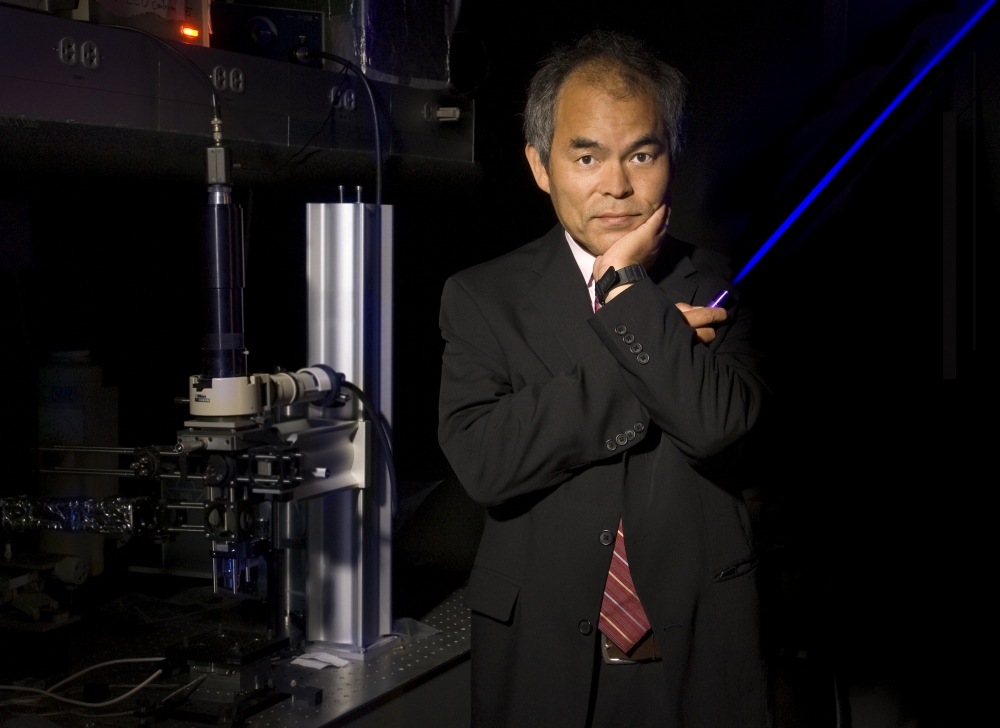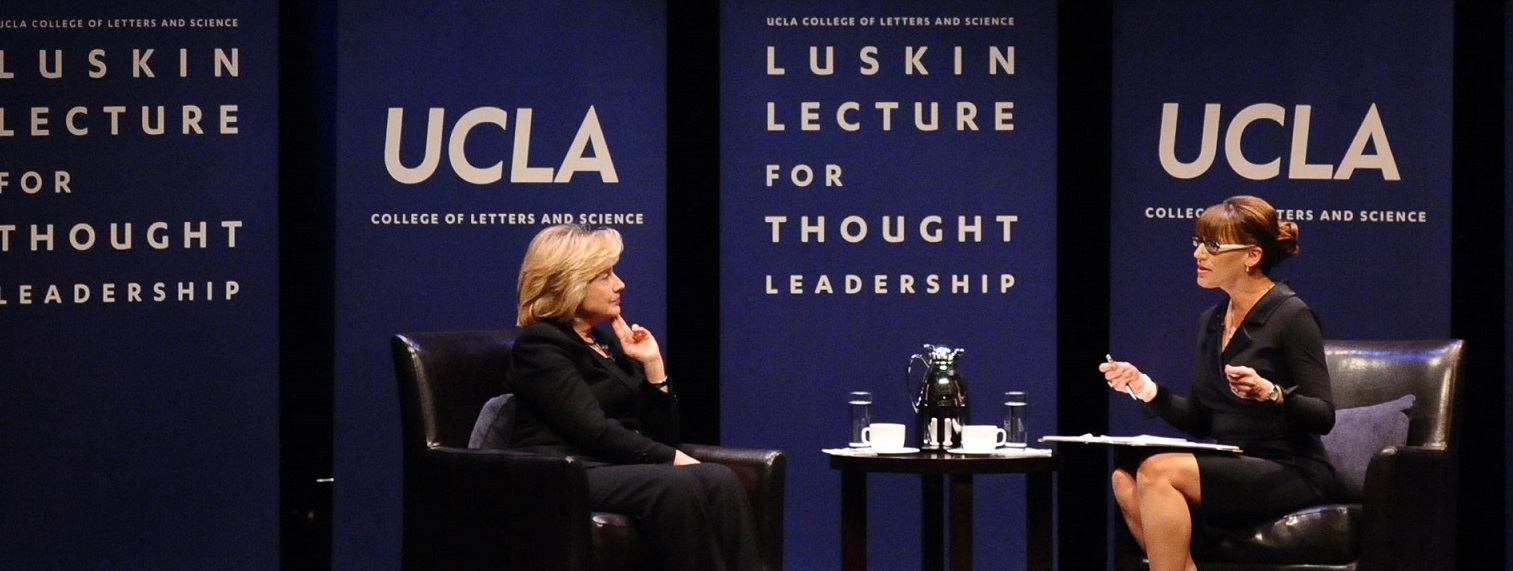
2014年的诺贝尔物理学奖被颁发给加州大学圣塔芭芭拉分校材料学院、电子与计算机工程学院教授Shuji Nakamura(中村修二)和其他两位科学家。
获奖理由是他们发明了高度节能的蓝光发光二极管。这使得明亮节能的白色光源进入世人的眼球。Nakamura与日本名城大学、名古屋大学的Isamu Akasaki,名古屋大学的Hiroshi Amano一同获得该奖。
根据瑞典皇家科学院,当Nakamura,Akasaki和Amano“在20世纪90年代初从半导体中制造出明亮的蓝光光束时,他们引发了一场照明技术的根本性改革。红色和绿色二极管虽遍处都是,但是没有蓝光,就没有白炽灯。尽管在科学和产业上付出了相当大的努力,但是蓝光LED在这三十年里仍是人类面临的一大挑战。”
LED灯“提高了全球约15亿缺乏电网供给的人民的生活质量”,科学院继续阐明。
Nakamura是固态照明和能源电子中心的副主任,是UCSB自1998年来第六位获得诺贝尔奖的教师。UCSB的校友Carol Greider获得了2009年的诺贝尔生理学、医学奖。
Nakamura说:“我很荣幸能凭借对蓝光LED的发明获得瑞典皇家科学院颁发的诺贝尔奖”。这句话出自于10月7日在UCSB工程科学教学楼前的一场新闻发布会上。面对一屋子的记者和学生,Nakamura说他很高兴梦想中的LED照明设备成为现实。“现在,我们能在超市里买到节能的LED电灯,减少能源的使用。我希望这还可以改善全球变暖的情况。”
UCSB校长Henry T.Yang代表全校的师生对Nakamura的成就表示祝贺,他称赞到:“我们十分激动地祝贺我们的同事Shuji Nakamura教授获得诺贝尔奖。今天,对我们所有UCSB现今在校的人,UCSB的学者、校友、同事和全世界的朋友来说,是一个值得庆贺的日子。”
“Nakamura引发了一场固态照明革命,影响极其深远,从信息和通讯到能源和环境,再到医疗护理和生命科学,无不受其影响。”Yang继续说道,“Nakamura教授不仅将价格合理又节能的LED照明设备引进发展中国家,而且对这个世界也做出了了不起的人道主义贡献。”
加州大学校长Janet Napolitano也评价了Nakamura的成就和研究。她说:“我们祝贺UCSB的Shuji Nakamura因其改革了照明技术的开拓性研究获得诺贝尔物理学奖。对此,我们致以崇高的敬意。”她还说道:“他和他的两个日本同事发明了制造明亮、节能的白色光源的技术。这无疑提高了全球缺乏电网供给的人民的生活质量。”
“这是第62个颁给加州大学教师或是研究员的诺贝尔奖,表明了加州大学所做的研究的重要性。Nakamura教授对科学、研究和教学方面的贡献就是公立大学教学的品质保证”Napolitano继续说道,“谨代表整个加州大学系统,我与UCSB校长Henry Yang衷心地祝贺Nakamura和他的同事们。”
UCSB工程学院院长Rod Alferness说:“对Nakamura教授和工程学院来说,这无疑是一份令人难以置信的荣誉。Nakamura在固态照明设备方面的成就持续影响着照明和计算机技术。如今,我们享受着LED电灯、显示屏、移动设备和大屏幕平板显示器,而这一切都必须感谢他这一开创性研究。”
The 2014 Nobel Prize in Physics has been awarded to Shuji Nakamura, professor of materials and of electrical and computer engineering at the University of California, Santa Barbara, and two others.
The prize is for the invention of efficient blue light-emitting diodes, which has enabled bright and energy-saving white light sources, and is shared with Isamu Akasaki of Meijo University and Nagoya University, Japan; and Hiroshi Amano of Nagoya University.
According to the Royal Swedish Academy of Sciences, when Nakamura, Akasaki and Amano “produced bright blue light beams from their semiconductors in the early 1990s, they triggered a fundamental transformation of lighting technology. Red and green diodes had been around for a long time, but without blue light, white lamps could not be created. Despite considerable efforts, both in the scientific community and in industry, the blue LED had remained a challenge for three decades.”
The LED lamp “holds great promise for increasing the quality of life for over 1.5 billion people around the world who lack access to electricity grids,” the academy continued.
Nakamura, who is also co-director of the campus’s Solid State Lighting & Energy Electronics Center, is the sixth faculty member at UCSB to have won a Nobel Prize since 1998. UCSB alumna Carol Greider received the 2009 Nobel Prize in Physiology or Medicine.
“I am very honored to receive the Nobel Prize from The Royal Swedish Academy of Science for my invention of the blue LED,” said Nakamura. Speaking to a room full of reporters and students who had gathered in the campus’s Engineering Sciences Building for a press conference on Oct. 7, Nakamura said it makes him happy to see his dream of LED lighting become a reality. “Nowadays we can buy energy-efficient LED light bulbs at the supermarket and help reduce energy use. I hope this helps global warming, too.”
Praising Nakamura’s great accomplishment, UCSB Chancellor Henry T. Yang offered his congratulations on behalf of the entire campus community. “We are overjoyed to congratulate our colleague Professor Shuji Nakamura on his Nobel Prize. This is a wonderful day of celebration for all of us at UC Santa Barbara, and for our extended community of scholars, alumni, colleagues, and friends around the world,” said Yang.
“Dr. Nakamura has helped to pioneer a scientific revolution in solid-state lighting, with far-reaching impact on fields ranging from information and communication, to energy and the environment, to health care and life sciences,” Yang continued. “By making it possible to bring affordable, energy-efficient LED lighting to developing countries, Professor Nakamura has also made a tremendous humanitarian contribution to our world.”
UC President Janet Napolitano also noted Nakamura’s achievement and the research that made it possible. “We honor and celebrate UC Santa Barbara’s Shuji Nakamura, who has been recognized with a Nobel Prize in Physics for his transformational research that has revolutionized lighting technology,” she said. “He and his two Japanese colleagues invented the technology that enabled bright and energy-saving white light sources, which promises to vastly improve the lives of people across the globe without access to electricity grids.
“This Nobel Prize, the 62nd awarded to a UC faculty member or researcher, underscores the paramount importance of research conducted at the University of Caifornia. Professor Nakamura’s dedication to science, research and teaching are a hallmark of or public universities,” Napolitano continued. “On behalf of the entire UC community, I join UC Santa Barbara Chancellor Henry Yang in extending heartfelt congratulations to Professor Nakamura and his colleagues.”
Said Rod Alferness, dean of UCSB’s College of Engineering: “This is an incredible honor for Professor Nakamura and the College of Engineering. Dr. Nakamura’s achievements in solid-state lighting continue to have far-reaching impact on lighting and computing technology. We all have his pioneering research to thank for the LED light bulb, monitors, mobile devices, and large flat screen displays that we enjoy today.”




